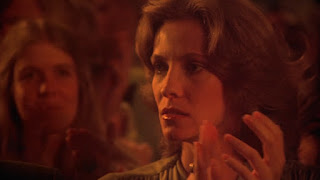Saturated red: This type of lighting puts a saturated red cell over the filming device. This is used in many horror films today to add to the environment and make it more dangerous. This is done so, as the color red is usually associated with death and blood. Scenes can even make use of this when they contrast it next to a color that is supersaturated to add to the already weird looking cell. I do not believe that this type of lighting could fit my ideals, however, in the future, it could be vital in establishing ambiance.
Elongated shadow: The elongated shadow is a technique that has been used more in classic horror films, as many of the shots of murder are represented with CGI or with quick jump cuts. However, since I do not own that type of technology or budget it could be a possibility to use the shadow to show off the killer. However, a jump cut of the killing may play off better. The elongated shadow adds a sense of danger. The character not being shown is introduced as more menacing. This is used from a strong light source, which will give a large high contrast shadow. It is even furthered if there is more light in the room, as seeing a shadow randomly appear adds a sense of invasion.Search This Blog
Tuesday, March 19, 2019
Research on lightniong
Subscribe to:
Post Comments (Atom)
...and we're done
I want to thank the Cambridge program, especially anyone watching, and my teacher Mrs. Stoklosa for giving us this opportunity to spend coun...
-
I want to thank the Cambridge program, especially anyone watching, and my teacher Mrs. Stoklosa for giving us this opportunity to spend coun...
-
Today and yesterday I was able to go through and edit a little bit of the raw footage and sound. So provided is just a short clip of the pro...
-
Today we were brought in some bad news from the company owning the rights to "Run Rabbit Run", Music Slaes. They had requested nea...




No comments:
Post a Comment